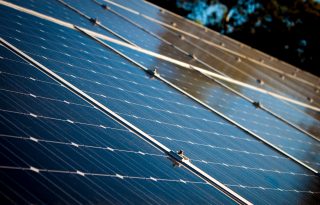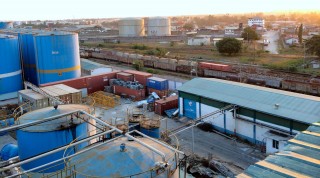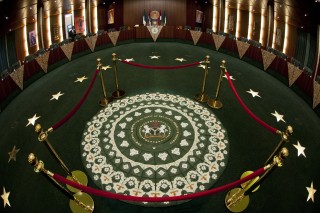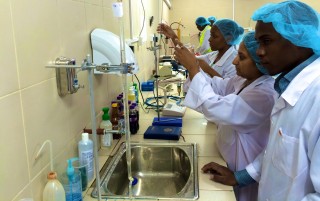From December 3rd to 14th, the world will have its eyes set on Katowice. The 24th United Nations Climate Change Conference (COP24) will take place in this southern Polish city. Green Climate Fund (GCF) subsidies, carbon-trading mechanisms, precise deadlines setting… 196 delegations will work towards “the practical achievement of the Paris climate agreement,” signed in 2015 during the COP21. As laudable as these goals may be, one significant stake risks going by unreported; the one related to the excessive amounts of mining resources needed to achieve the energy transition.
Electric cars, windmills, solar panels, cities and intelligent networks… All these “green” and digital technologies share the specificity of being highly metal consuming. They devour basic metals such as iron, copper or zinc, as well “rare metals”, as they are less abundant. Cobalt, tungsten, Rare Earth elements, tantalum, vanadium, indium, or gallium are sought after for their great optical, catalytic or magnetic properties. These “small metals” are the lesser-known base of digital and green tech, presented as environment-friendly.
We already consume over two billion tonnes of mineral resources each year — roughly equivalent to 500 Eiffel Towers per day. Given these new needs, the German agency for mineral resources predicts that the demand for metals such as germanium could double by 2035, that needs for dysprosium and tantalum could quadruple and cobalt demand could multiply by 24. In 2017, a World Bank report estimated that lithium extraction could, on the medium term, grow by 1,000 percent due to demand for batteries.
The energy transition is a metallic one. And yet, the 2015 Paris Agreement on climate doesn’t say a word about the environmental, economic and geopolitical challenges surrounding this new dependence. Terms such as “metals,” “minerals” or “raw materials” aren’t even mentioned. Will we avoid this fatal mistake in Katowice?
The question is all the more crucial given that the environmental impact of rare metals’ extraction and refining contradict the litany of incantatory statements on the coming of a greener world. In Chile, the Democratic Republic of Congo or even Kazakhstan, copper, cobalt and chrome extraction and refining go hand in hand with ecosystems’ pollution and massive sanitary consequences. China has paid a very hefty price. We visited the mining areas of the southern Jiangxi province and the Inner Mongolia Autonomous Region. We can testify about the paradox of green energies. So-called clean technologies require metals which extraction is particularly damaging. Likewise for “renewable” energies: they do not work without non-renewable ones. As for digital technologies meant to dematerialize our lifestyles, they benefit from phenomenal amounts of solid materials.
Which ones among the 30 heads of State expected in Katowice know about this darker side of green energies? In the West, the question was concealed from the beginning of the 1990s. At the time, many States closed their mines and refining factories, deemed as too polluting, while less industrialized countries would take on this burden to catch up with their industrial delay. In other words, the Westerners have delocalized green technologies’ pollution, and these political choices have led the world to a duality between the dirty ones and those allegedly clean.
The parenthesis of the “happy globalization,” in which every resource is available, everywhere and at any cost, shuts down progressively. The “markets’ invisible hand” is insufficient to smooth the new tensions around rare metals’ supply. We expect the first mineral resource shortages to happen long before petroleum ones! A question arises, incongruous yet essential: Could we fail the achievement of the energy transition, not due to a lack of agreement on either GCF or carbon finance in Katowice, on December 14th, but because we will lack minerals and energies to industrialize them?
The COP24 could be the occasion to silence the doom-mongers by committing to a courageous and practical dialogue on the necessary rationalization of mineral resources. A robust circular economy of metals implies tackling waste that ends up in electric discharges on the African continent. This goal would also mean for us to start eco-designing technological products, an essential condition for better recycling of rare metals (the recycling rate of some does not exceed one percent). The fight against planned obsolescence should be systematized as well.
To achieve the energy transition would implicate to rethink our economic models, which are too focused on the short-term benefits and a religious chase for lower costs. The deployment of an economy based on functionality that gets most of its profits not from its products but from its related-services is an inspiring possibility. The question of the frugality of our consumption habits is key, because without adequate resource management, as the World Bank reminded, “a future based on green technologies […] could ruin […] the Sustainable Development Goals”.
To sum up, Western states will have to question themselves about the necessary reopening of the very mines they closed a few decades ago, in the name of an ecological ideal. “Responsible mining,” as suggested by some European governments, seems like a sound policy. That action path would be better than the irresponsible mining policy currently prevailing in countries with less respect for the environment and would depollute the production cycle of green technologies. Besides, the COP24 organizers claim that they work on an “inclusive and fair transition”… These words can be only coherent if the most industrialized countries agree to share the mining industry burden with poorer countries that endure nowadays the damaging side effects of a greener world.
With these action plans, the COP24 negotiators would move away from the “soil-less” approach of the energy transition that has prevailed so far. History would remember they were among the firsts to mitigate the dangerous side effects of our quest for a more livable planet — dangers as significant as those we aimed to solve, of which we have yet to realize the entire scope.
By Guillaume Pitron, journalist and director, author of “The war of rare metals: the hidden face of the energy and digital transition” (LLL Editions)








